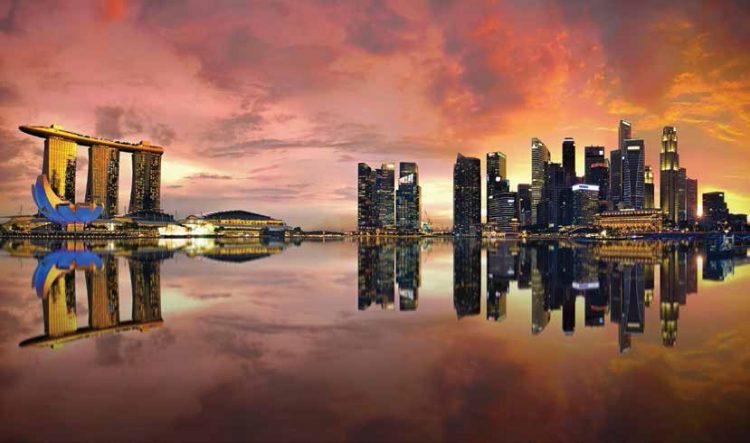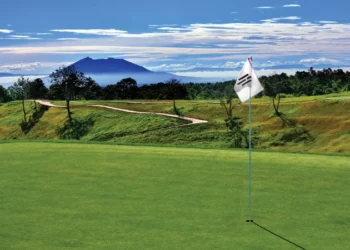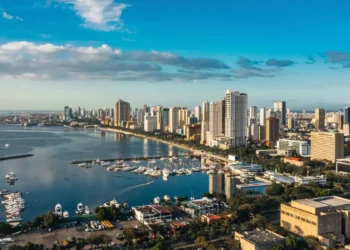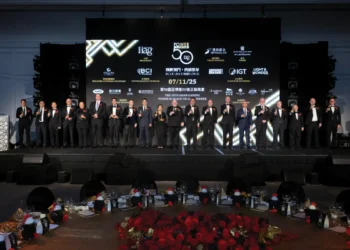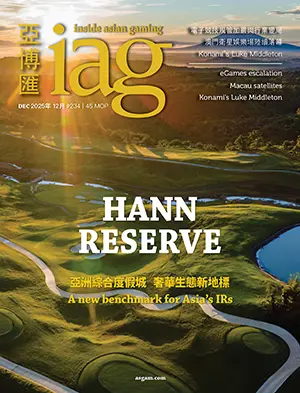Five years on, the city-state’s integrated resorts remain Asia’s benchmarks, but Singapore and its casino operators face mounting challenges
The success of Singapore’s integrated resorts is evident all over town. Marina Bay Sands’ three sloping towers linked by the rooftop SkyPark have become the citystate’s architectural signature. Resorts World Sentosa’s Universal Studios theme park has helped drive a tourism boom, with visitor arrivals up two-thirds and their spending virtually doubled since 2009. IR celebrity chefs stirred a boom in top notch restaurants. Gaming taxes, including the levy on Singaporeans who enter casinos, generate hundreds of millions annually for public coffers.
Singapore’s IR success shows in the financial reports of operators Las Vegas Sands and Genting Group subsidiary Genting Singapore. Teetering on the brink of bankruptcy in 2008, LVS took criticism in Macau for continuing work in Singapore after suspending construction on Sands Cotai Central; the company was accused of investing Macau profits overseas, an allegation LVS Chairman and CEO Sheldon Adelson vehemently denied. Indisputably, Singapore profits helped LVS rebound to become the world’s largest gaming company by market cap and fuel its Macau expansion.
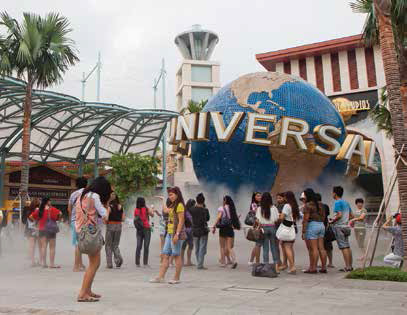
Before Sentosa, Genting’s gaming portfolio consisted mainly of a profitable monopoly casino in Malaysia and cruise ships, along with largely unfulfilled ambitions to expand overseas. Success in Singapore kicked off Executive Chairman and CEO Lim Thay Kok’s dream of making Genting a global player; the most audacious of its expansion plans is the proposed US$4 billion Resorts World Las Vegas.
Singapore’s integrated-resort model has inspired governments across Asia seeking a boost in tourist arrivals and tax revenue. It’s seen as the inspiration for the South Korean government’s licensing of four $1 billion-plus integrated resorts at Incheon, on the doorstep of the nation’s gateway airport. It’s spurred development in Manila, where four IRs with a combined price tag above $5 billion are creating the biggest casino cluster between Macau and Las Vegas, and Vietnam, where the government has authorized multibillion-dollar resorts and is considering lifting the ban on its citizens gambling at casinos within its borders, perhaps replacing the ban with a Singapore-style entry levy on locals.
Singapore’s IRs have shined on many levels. “The IRs have enriched Singapore’s breadth of experiences, adding significant buzz and vibrancy to the tourism industry,” Singapore Tourism Board Executive Director for Arts, Entertainment and Integrated Resorts Carrie Kwik says. “Both the leisure and Meetings, Incentives, Conventions and Exhibitions [MICE] components of the IRs have been successful, clinching international accolades that have helped feature Singapore prominently.”
“Singapore started a trend where you can have a casino and have law and order,” attorney and veteran gaming executive Terence Tay says.
‘GOOD CLEAN FUN’
“We’ve been fighting against this idea that we are a dull cultural desert, that everything is so tightly controlled and that policymakers and political leaders are anal about every single thing there is to be anal about,” says Institute of Policy Studies Senior Research Fellow Gillian Koh. “The IRs say Singapore is keeping up with the times. It affords its residents and people who want to visit good clean fun. It’s swish, it’s swanky and yet we’re able to keep out the worst of it, the bad stuff. It’s really trying to show that there’s a model of how you can have your cake and eat it almost.”
“Singaporeans are proud of the country’s progress and our reinventions,” YWS Design Business Manager Wendy Chin, a Singapore native, says. “The IRs have given government agencies a lot of confidence,” reflected in growth of its Formula One street circuit night race and events at the Singapore Sports Hub [a sports complex built on the site of the former National Stadium], which last October began a five-year run hosting the WTA Finals, the women’s tennis world championships. Players stayed at Marina Bay Sands (MBS) and, like other guests, delightedly snapped selfies in the rooftop infinity pool overlooking Singapore’s skyline.
Five years after Genting’s Resorts World Sentosa kicked off Singapore’s IR experiment, the city-state’s model of open license bidding, strict development guidelines aligned with government policy initiatives and stringent gaming regulation has been deemed a success. The next five years will show whether the model can keep working in Singapore amid plateauing gaming revenue and tourism, and whether it can work elsewhere.
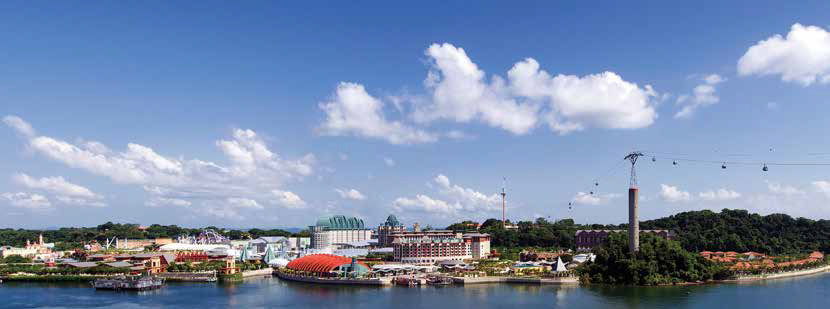
“Many [foreign] government officials visit the IRs in Singapore and think, we want this in our country,” Spectrum Asia chief Executive Paul Bromberg says. “They go home and find it’s not that easy. It takes a lot of government will and years of behind-the-scenes planning. Four years before the IRs opened, Singapore was working hard on their development and regulation.”
Despite those years of preparation, the IR experiment didn’t start smoothly. When the S$7 billion ($5.25 million) Resorts World Sentosa opened its doors on 14th February, 2010, it was a Sunday, Valentine’s Day and the first day of Chinese New Year. “There was nowhere else to go,” Mr Tay recalls. “They expected it to be successful, but not that successful.”
With thousands queuing in the tropical sun with little shade or water, Genting Executive Chairman Lim and RWS Chief Executive Tan Hee Teck helped with crowd control. Early hiccups included frequent shutdowns of Universal Studio’s much-heralded Battlestar Galactica dueling roller coaster, finally closed for reconstruction last July. Ironically, Genting paid Universal Studios US$1 billion, a source says, to secure the theme park rights that many believe clinched the Sentosa license.
Occasional glitches haven’t prevented RWS—also featuring the world’s second-biggest aquarium, a water park, six hotels, museums and a destination spa—from becoming one of the world’s most profitable casino resorts, reporting S$968 million in EBITDA on net revenue of S$2.2 billion, a 43.5% margin, for the first nine months of last year.
The world’s most profitable casino resort is likely crosstown rival Marina Bay Sands, also the world’s most expensive at US$5.7 billion. For the first nine months of 2014, MBS reported EBITDA of $1.2 billion on $2.38 billion revenue, a 50.7% margin, believed to be the highest in the industry. MBS non-gaming revenue, which Singapore had hoped would comprise 50% of total revenue, was $633.7 million, or 26.7% of the total. Jointly the IRs’ non-gaming revenue, $991.5 million, was 24.5% of their $4 billion combined total revenue.
PROFITABLE PLATEAU
The key fact for both resorts is that revenue is flattening, albeit at a level generating substantial profit. Singapore’s gaming revenue hasn’t moved much since reaching an estimated $6 billion in 2011, the IRs’ first full year of operation, though it fluctuates substantially each quarter owing to volatility in hold, a result of the relatively small pool of VIP players coming to the city. Third quarter gaming revenue fell 21% at RWS and 9% at MBS year on year, and EBITDA declined at both, reflecting the same economic and political headwinds from China hitting Macau, plus Singapore’s declining Chinese visitor arrivals, a weaker Indonesian rupiah and less frothy regional economic growth.
Those factors also contributed to non-gaming revenue at RWS declining for the first time ever in 2014’s second quarter, and then again in the third. On the gaming side, marketing constraints prevent the IRs from fully exploiting the home market’s wealthy residents—an estimated 15% of Singapore’s population are US dollar millionaires— and junket curbs restrict their reach overseas. “For the foreseeable future, there will be immense challenges in growing revenue,” Mr Tay says.
Located on Sentosa, Singapore’s designated leisure island, RWS has a reputation as a family destination, and owing to its Malaysian roots, many say it draws customers mainly from “across the causeway” linking Singapore to Malaysia. In reality, RWS consistently beats MBS in share of VIP roll with a 61-39% edge, and analysts estimate about half of it comes from mainland Chinese players. Genting’s longstanding regional network built through its flagship Resorts World Genting, outside Kuala Lumpur, aid its VIP edge.
In mass-market revenue share, MBS leads 55-45%, posting a category record $291 million in the third quarter. The resort sits in Singapore’s designated New Downtown area, within walking distance of the financial district and, since June 2012, connected to the MRT mass transit rail system, making access easy. Last year, MBS welcomed 40 million visitors, about 110,000 daily. RWS stopped releasing aggregate property visitor numbers in 2012, when its daily visitors reached 44,000.
RWS is not connected to the MRT, but reached via monorail or moving walkway from the closest MRT stop, or by taxi or car. “That’s a real restriction on Genting,” says veteran Southeast Asia gaming executive Michael Gore. “They can’t even fight Sands head-to-head.” Genting lobbied unsuccessfully for an MRT extension to Sentosa, adds Mr Gore, who worked on the company’s Singapore license application.
PROTECT AND GROW
When Singapore lawmakers approved the IR experiment in 2005, Prime Minister Lee Hsien Loong told Parliament the city-state had to protect and grow its tourism industry. The two big needs were MICE facilities and an “anchor attraction” for Sentosa.
MICE was the focus of Las Vegas Sands’ then-President and Chief Operating Officer William Weidner’s bid presentation to Singapore authorities. “He said we’re going to bring MICE, and we’re going to bring it hard, and here’s what we’ve done in Vegas with MICE at our other properties,” according to a witness to the presentation who requested anonymity, who adds, “Weidner could sell ice to Eskimos.”
MBS includes a 120,000-square-meter convention center, among the region’s largest. “Our MICE business continues to thrive and closed the year with over 2,500 events held,” MBS President and CEO George Tanasijevich says. “We are not deviating from the original concept of a MICE-led IR, and this plan remains as our pillar.” RWS also does MICE, often featuring its attractions as venues.
Despite high hotel and other costs, Singapore’s air connectivity, safety and widespread use of English and Chinese, make it a favorite of event organizers. MICE isn’t a huge money spinner for MBS, accounting for 3% of third-quarter revenue at $23.9 million, but it supports more lucrative hotel, F&B, casino and shopping mall operations.
Universal Studios and other attractions perform a similar function for RWS, but with key differences. The theme park is believed to run at a deficit. More importantly, RWS has fewer hotel rooms than MBS, about 1,600 versus 2,561, with lower occupancy, 95% versus 99%, and a lower average daily rate, $309 versus $468, for the third quarter.
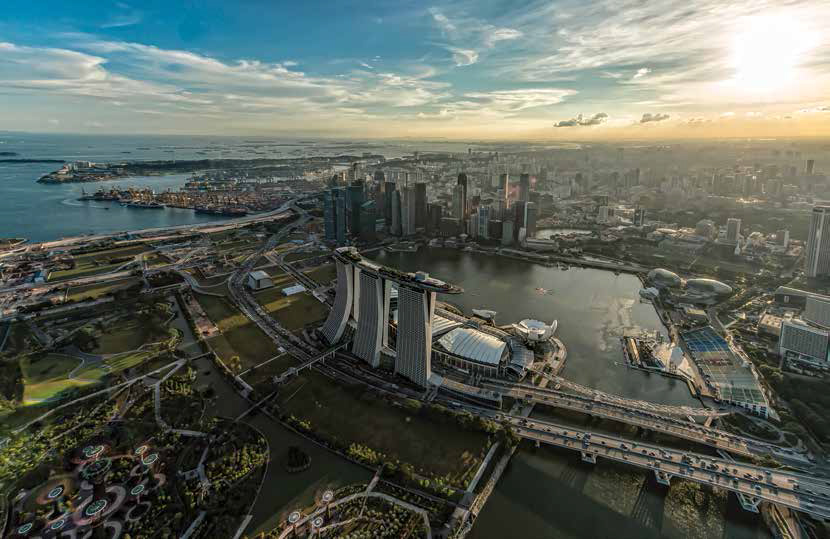
RWS has just 31 retail shops, while MBS has an 800,000-square-foot mall that generated $44.8 million in quarterly operating profit and 7% of trailing 12-month EBITDA. Fewer rooms and shops at RWS limit profit opportunities, giving it less buffer against gaming revenue gyrations.
SPACE RACE
RWS wanted to include more retail and hotel rooms, Mr Gore says. “The problem was the severe limitation on built-up space.” Its license limited RWS to 343,000 square meters of gross floor area (GFA) on its 49 hectare site. “We topped out. There was no more space left.” MBS has GFA of 581,400 square meters on a 15.5 hectare plot, though both resorts have equal 15,000-square-meter casino limits. The smaller GFA allocation at RWS aimed to preserve Sentosa’s green character. Open spaces, including most RWS theme park areas, don’t count against the GFA limit.
It’s not just about how much space RWS has, but what it’s done with it. YWS Design Regional Director Nicola Greenaway says RWS has an idyllic location with great attractions and has successfully integrated with Sentosa’s other attractions. But its “institutional” design doesn’t complement the setting.
Centered around Festive Walk, the semi-covered area linking resort elements, RWS was “designed by someone parachuted in and not understanding the climate and local culture of how things should flow,” Ms Greenaway says, referring to US-based Michael Graves, who’s done extensive work for Disney. “It’s just too hot.”
Ms Greenaway, whose company’s gaming project portfolio includes Macau, Las Vegas and both Singapore IRs, says, “Holistic planning should have started at VivoCity,” the 1 million-square-foot shopping mall that’s mainland Singapore’s gateway to Sentosa. “VivoCity has great footfall. Planning needs to keep that footfall cool and bring them to Sentosa.”
Genting Singapore, the locally listed subsidiary that includes RWS, is addressing the accommodation deficit with a new 550-room hotel in Jurong, a 15-minute drive from RWS, opening later this year. Morgan Stanley analysts Praveen Choudhary and Xin Jin Ling forecast the Jurong hotel could provide 5% growth to 2015 visitation, revenue and EBITDA. LVS has requested land adjacent to MBS to construct additional hotel and convention space but concedes the government is unlikely to agree.
Singapore can choose to grant another casino license in December 2016, 10 years after issuing its second IR license to Genting. Some believe a third IR would help build critical gaming mass to attract more players. Others think it would cannibalize a constricted market and increase social impacts without much benefit. The government’s decision may rest on whether it wants to bring even more tourism driving infrastructure to the city; the original licenses being widely regarded as deriving from its desire for more theme parks and MICE space.
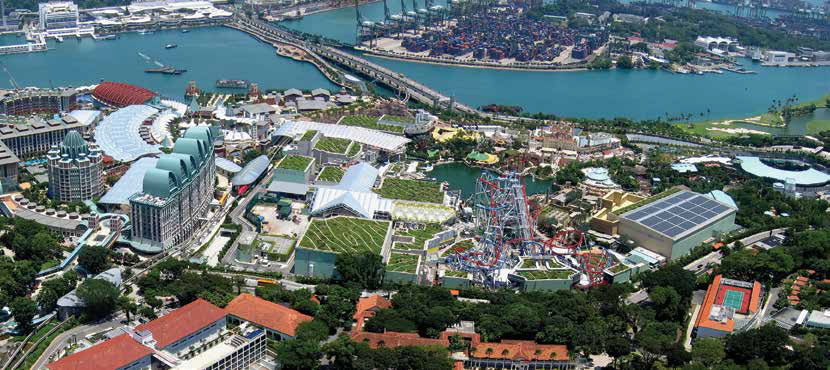
Tourism could use a jolt. Through the first 11 months of last year, tourist arrivals were down 3.4%, and visitor expenditures fell 3% in the first half, according to the most recent data released by the Singapore Tourism Board. If those figures hold, it would be the first annual drop in either category since the IR openings, reflecting a broader trend.
While visitor arrivals and expenditures have grown from 9.7 million and S$12.6 million, respectively, in 2009 to an estimated 15 million and $22.8 million last year, by far the biggest increases came in 2010, when arrivals jumped 19.6% year on year and spending soared 50%, as the region emerged from the global recession. It’s difficult to say how much of the 2010 growth resulted from the catalyst provided by the IRs and how much was down to timing. The growth rate of visitor arrivals and spending has declined every year since 2010, while expenditure per visitor decreased though 2013, but could have risen marginally last year.
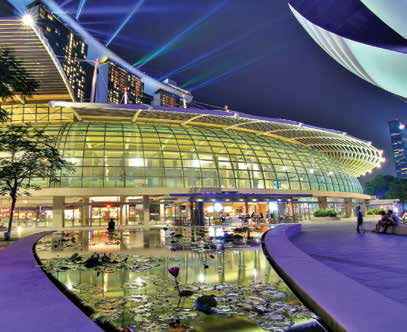
Singapore faces further challenges as IRs sprout across the region, but would-be rivals don’t match its destination appeal. “Singapore has a niche with regard to safety, transportation, everything,” Mr Gore says. “I don’t think anybody’s going to threaten them.”
“Singapore is well-organized, and it’s easy to do stuff,” says Brewerkz microbrewery founder Devin Kimble, who flirted with MBS about locating a branch in its bayfront floating pavilions. Although they may not have delivered all that the government hoped for, Mr Kimble believes, “On balance, the IRs have been quite positive, opened up some things. They’ve added some spice, architectural interest, theater options, music options. … Having a zoo just isn’t the same.”
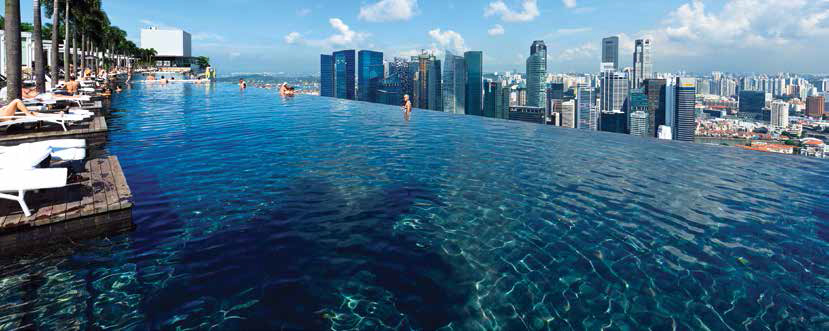
Editor at large Muhammad Cohen also blogs for Forbes on gaming throughout Asia and wrote Hong Kong On Air, a novel set during the 1997 handover about TV news, love, betrayal, high finance and cheap lingerie.






